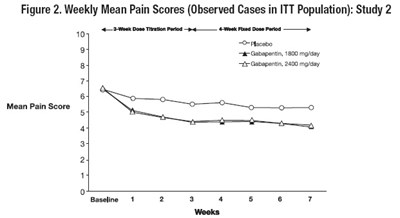Product Images Gabapentin
View Photos of Packaging, Labels & Appearance
Product Label Images
The following 14 images provide visual information about the product associated with Gabapentin NDC 83008-063 by Quality Care Products, Llc, such as packaging, labeling, and the appearance of the drug itself. This resource could be helpful for medical professionals, pharmacists, and patients seeking to verify medication information and ensure they have the correct product.
image description - CamScanner 06 14 2024 09.58

This prescription information pertains to Gabapentin Tablets, USP 600 mg. The medication is manufactured by Ascent Pharmaceuticals, Inc. based in Central Islip, NY, and distributed by Camber Pharmaceuticals, Inc. in Piscataway, NJ. The item comes in a pack of 30 tablets with a unique GTIN code of 00383008063308. The tablets contain 600 mg of gabapentin and are recommended to be stored at 77 degrees F. Remember to dispense with the Medication Guide.*
sideeffects - Sideeffects
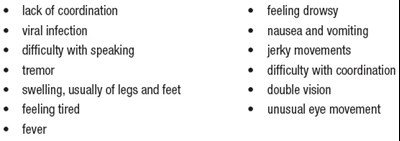
This description lists common symptoms associated with a viral infection. Some of the symptoms mentioned include lack of coordination, difficulty with speaking, tremor, swelling in legs and feet, feeling tired, fever, feeling drowsy, nausea and vomiting, jerky movements, double vision, and unusual eye movements. These symptoms may indicate the presence of a viral infection and can help in recognizing and seeking appropriate medical care.*
Table-1 - Table1
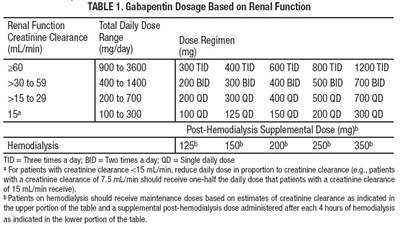
This text provides a comprehensive table detailing the recommended dosages of Gabapentin based on renal function. It outlines the total daily doses for various creatinine clearance levels, including recommendations for three times a day (TID), two times a day (BID), and single daily dose (QD) regimens. It also includes specific supplemental doses for patients undergoing hemodialysis. The guidance is given for adjusting doses based on the patient's creatinine clearance level and provides specific examples for dose reduction.*
Table-2 - Table2

This text presents a comparison of risk by indication for antiepileptic drugs in a pooled analysis. The table includes data on the number of events per 1,000 patients for placebo patients and drug patients for different indications. It also shows the relative risk and risk difference for each indication. The indications listed are epilepsy, psychiatric, and other, with corresponding event rates provided. These statistics help in evaluating the effectiveness and potential risks associated with the use of antiepileptic drugs for different medical conditions.*
Table-3 - Table3

This is a table showing the adverse reactions observed in pooled placebo-controlled trials for Postherpetic Neuralgia for Gabapentin versus Placebo. The document lists various adverse reactions along with their occurrence rates expressed as a percentage within the sample sizes for each group. Adverse reactions are categorized under various systems such as Body as a Whole, Digestive System, Metabolic and Nutritional, Nervous System, Respiratory System, and Special Senses. Reported adverse reactions include Asthenia, Infection, Accidental injury, Diarrhea, Dry mouth, Constipation, Nausea, Vomiting, Peripheral edema, Weight gain, Hyperglycemia, Dizziness, Somnolence, Ataxia, Abnormal thinking, Abnormal gait, Incoordination, Pharyngitis, Amblyopia, Conjunctivitis, Diplopia, Otitis media, and blurred vision.*
Table-4 - Table4

This is a list of adverse reactions observed in pooled placebo-controlled add-on trials in epilepsy patients over 12 years of age who were treated with Gabapentin®. Some of the adverse reactions reported include fatigue, increased weight, back pain, peripheral edema, cardiovascular effects, digestive system issues like dyspepsia and constipation, dry mouth, nervous system effects such as somnolence and dizziness, respiratory issues like pharyngitis, urogenital effects like impotence, and more. Amblyopia, described as blurred vision, was also reported. The data provides insights into potential side effects associated with the use of Gabapentin in epilepsy patients.*
Table-5 - Table5

This information provides a comparison of adverse reactions between Gabapentin and Placebo in a placebo-controlled add-on trial for pediatric epilepsy patients aged 3 to 12 years. Adverse reactions listed include nausea and/or vomiting, emotional lability, respiratory infection, and other undisclosed reactions. The table presents data in percentages for each group (Gabapentin and Placebo) based on the number of participants in the trial.*
Table-6 - Table6

This text provides information on controlled postherpetic neuralgia (PHN) studies involving the duration, dosages, and number of patients in two different studies with gabapentin. Study 1 lasted for 8 weeks with a target dose of 3600 mg/day, involving 113 patients receiving gabapentin and 116 receiving a placebo. Study 2 had a duration of 7 weeks with dosages of 1800 and 2400 mg/day, and included 223 patients receiving gabapentin and 111 receiving a placebo. In total, the studies involved 336 patients on gabapentin and 221 patients on placebo. The text also mentions that gabapentin was given in three divided doses (TID).*
clcr - clcr

This text provides a formula for estimating the glomerular filtration rate (GFR) using the patient's age, weight, and serum creatinine level. The formula involves a calculation based on these factors to determine the estimated GFR value.*
Figure-1 - figure1

This is a figure showing weekly mean pain scores observed in the Intent-to-Treat (ITT) population in Study 1. The graph includes baseline data and pain scores for weeks 1 to 8, with different treatment groups represented. The scale ranges from 0 to 10, indicating pain severity.*
Figure-3 - figure3
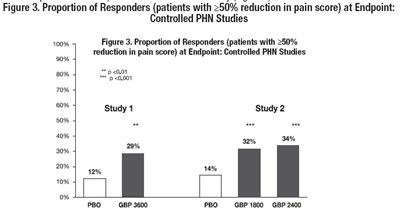
This text provides information on the proportion of responders in controlled postherpetic neuralgia (PHN) studies. It includes statistics on patients with more than 50% reduction in pain score at the endpoint of the studies. The data is presented for Study 1 and Study 2, comparing different treatment groups such as placebo (PBO), GBP 1800, and GBP 2400.*
Figure-4 - figure4
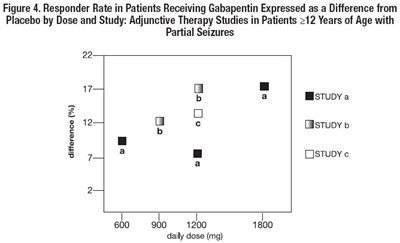
This text provides information on the Responder Rate in Patients Receiving Gabapentin compared to placebo by dose and study. It specifically details Adjunctive Therapy Studies in Patients above 12 years of age with Partial Seizures. The data includes the difference (%) in responder rate at different doses of gabapentin - 600mg, 900mg, 1200mg, and 1800mg - for Study a, Study b, and Study c.*
* The product label images have been analyzed using a combination of traditional computing and machine learning techniques. It should be noted that the descriptions provided may not be entirely accurate as they are experimental in nature. Use the information in this page at your own discretion and risk.
